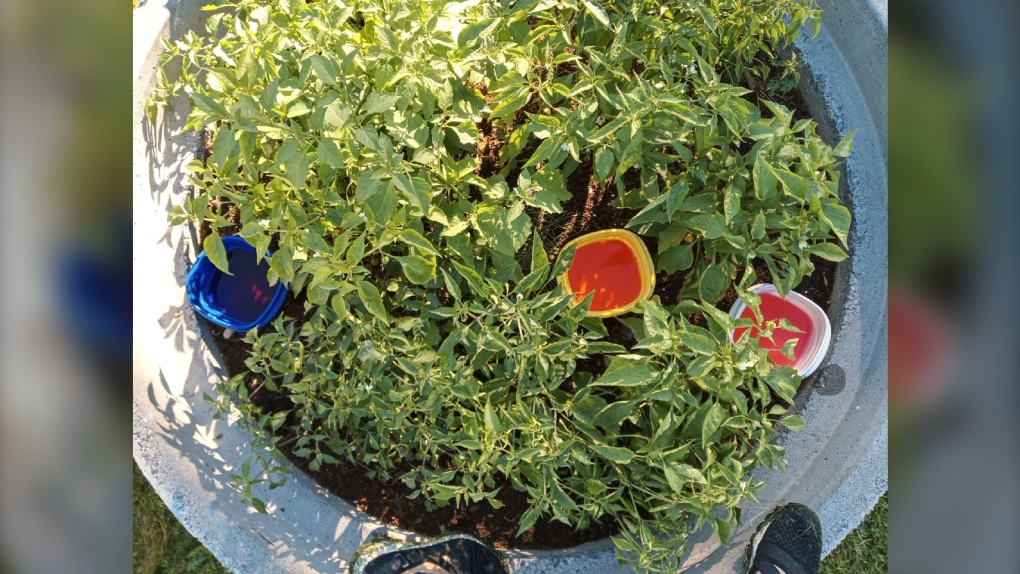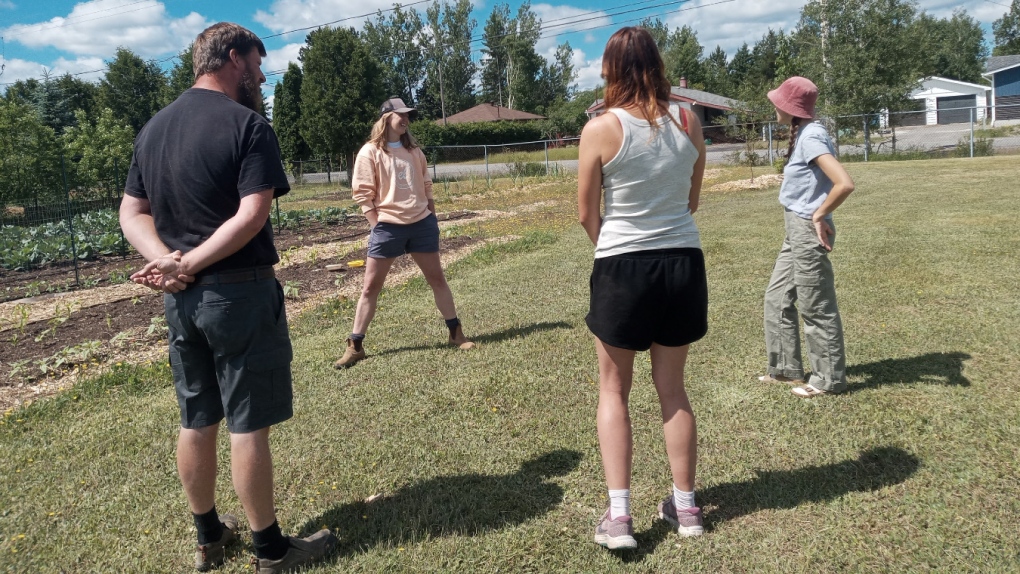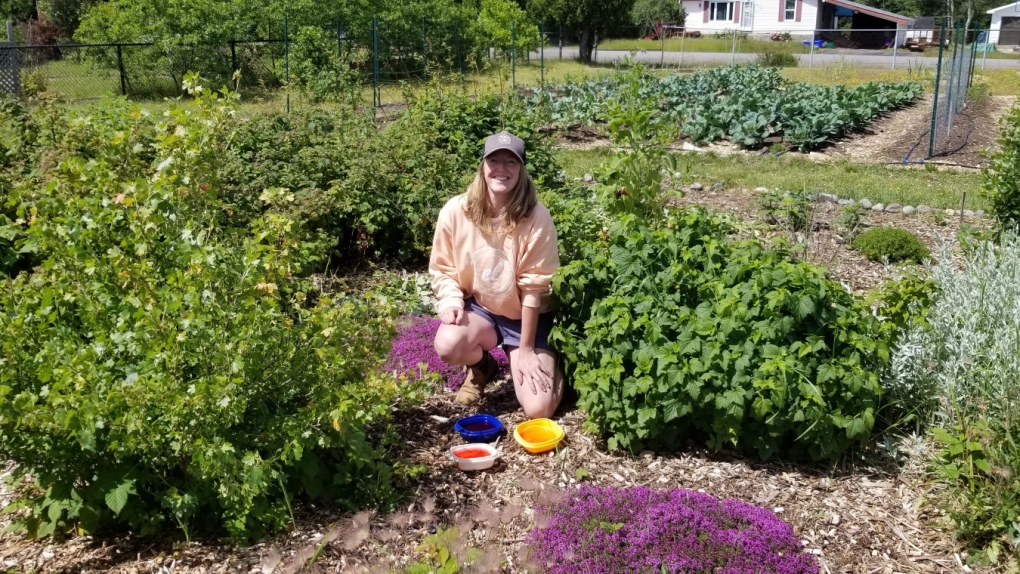New study examines mining impact on area's pollinators
'Current land uses may have a greater influence on pollinating insects than disturbance caused by mining.’
 A new report examines the impact of mining on pollinating insects. It has found current land uses may have a greater influence than mining practices. As part of the report, researchers and volunteers collected insect samples from food forest sites over the summer months. (Supplied/Kaleigh Mooney)
A new report examines the impact of mining on pollinating insects. It has found current land uses may have a greater influence than mining practices. As part of the report, researchers and volunteers collected insect samples from food forest sites over the summer months. (Supplied/Kaleigh Mooney)
That’s according to new research done by Trent University in conjunction with Sudbury Shared Harvest.
“Simply put, it does not seem to matter if there is mining disturbance nearby, as long as there is enough forested area to supply the pollinator population with supplementary food resources and nesting habitat,” said author and undergraduate student Kaleigh Mooney.
“That said a new study with more sample sites would be beneficial to draw stronger conclusions about the relationship between pollinator groups and surrounding green space.”
Volunteers and Sudbury Shared Harvest staff collected insect samples from food forest sites over the summer months.
 Volunteers and Sudbury Shared Harvest staff collected insect samples from food forest sites over the summer months as part of the research study. (Supplied/Kaleigh Mooney)
Volunteers and Sudbury Shared Harvest staff collected insect samples from food forest sites over the summer months as part of the research study. (Supplied/Kaleigh Mooney)
Her report is part of a long-term study by Sudbury Shared Harvest in collaboration with researchers at Trent University and Sir Sandford Fleming College that takes a look into the effects of heavy metal contamination in soils.
 A new report examines the impact of mining on pollinating insects. It has found current land uses may have a greater influence than mining practices. Kaleigh Mooney, an undergraduate student and the author of the report, collecting insect samples in the summer of 2023. (Supplied/Kaleigh Mooney)
A new report examines the impact of mining on pollinating insects. It has found current land uses may have a greater influence than mining practices. Kaleigh Mooney, an undergraduate student and the author of the report, collecting insect samples in the summer of 2023. (Supplied/Kaleigh Mooney)
“So the big conclusions I would draw from this study are those island gardens, like having the most amount of garden space available for pollinators, is a really essential tool for increasing the diversity in city areas, especially when it's in close proximity to industrial practices,” said Mooney.
Kaleigh Mooney“In growing native plants, it’s something that a lot of people hadn’t heard of before, when we started our food forest we hadn’t paid a lot of attention to planting native, it was kind of something that we had thought about and considered but more and more now when we plant flowers in our gardens, we’re specifically trying to plant native plants,” said Carrie Regenstreif, co-executive director of Sudbury Shared Harvest.
Regenstreif adds their long-term goal is to share results with the community in the form of guidelines for growing food safely in local soil.
The findings can be found on the group’s website.
CTVNews.ca Top Stories

More than 115 cases of eye damage reported in Ontario after solar eclipse
More than 115 people who viewed the solar eclipse in Ontario earlier this month experienced eye damage after the event, according to eye doctors in the province.
Toxic testing standoff: Family leaves house over air quality
A Sherwood Park family says their new house is uninhabitable. The McNaughton's say they were forced to leave the house after living there for only a week because contaminants inside made it difficult to breathe.
Decoy bear used to catch man who illegally killed a grizzly, B.C. conservation officers say
A man has been handed a lengthy hunting ban and fined thousands of dollars for illegally killing a grizzly bear, B.C. conservation officers say.
B.C. seeks ban on public drug use, dialing back decriminalization
The B.C. NDP has asked the federal government to recriminalize public drug use, marking a major shift in the province's approach to addressing the deadly overdose crisis.
OPP responds to apparent video of officer supporting anti-Trudeau government protestors
The Ontario Provincial Police (OPP) says it's investigating an interaction between a uniformed officer and anti-Trudeau government protestors after a video circulated on social media.
An emergency slide falls off a Delta Air Lines plane, forcing pilots to return to JFK in New York
An emergency slide fell off a Delta Air Lines jetliner shortly after takeoff Friday from New York, and pilots who felt a vibration in the plane circled back to land safely at JFK Airport.
Sophie Gregoire Trudeau on navigating post-political life, co-parenting and freedom
Sophie Gregoire Trudeau says there is 'still so much love' between her and Prime Minister Justin Trudeau, as they navigate their post-separation relationship co-parenting their three children.
Last letters of pioneering climber who died on Everest reveal dark side of mountaineering
George Mallory is renowned for being one of the first British mountaineers to attempt to scale the dizzying heights of Mount Everest during the 1920s. Nearly a century later, newly digitized letters shed light on Mallory’s hopes and fears about ascending Everest.
Loud boom in Hamilton caused by propane tank, police say
A loud explosion was heard across Hamilton on Friday after a propane tank was accidentally destroyed and detonated at a local scrap metal yard, police say.





























